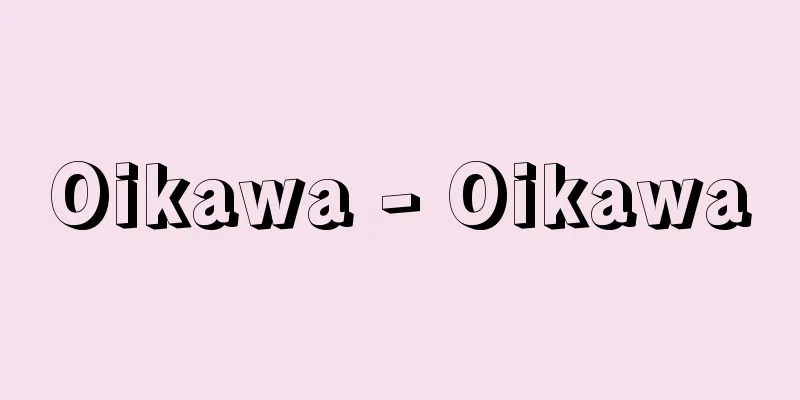Otitis media - otitis media

|
It is an inflammation of the air cells in the tympanic cavity and the temporal bone connected to it, and is divided into acute otitis media, serous otitis media, and chronic otitis media. Acute otitis media generally occurs secondary to inflammation of the upper respiratory tract due to a cold, or sometimes allergies. It is common in children, especially those between 6 months and 2 years of age, and is so common that 85% of adults have suffered from acute otitis media in childhood. The first symptoms are cold symptoms plus a feeling of blockage in the ears, and the feeling that one's own voice sounds louder (catarrhal otitis media). Hearing gradually worsens, but the hearing loss is conductive. The mucous membrane inside the tympanic cavity swells, exudate accumulates, and pathogenic bacteria infect (acute suppurative otitis media). The most common causative bacteria are pneumococcus, followed by influenza bacteria and streptococcus, which usually enter the tympanic cavity through the Eustachian tube. At this stage, fever (more pronounced in children) and severe ear pain that feels like a stabbing or drilling sound occur. The eardrum becomes red all over, the tympanic cavity fills with pus, the eardrum bulges, and finally the eardrum ruptures (tympanic membrane perforation), and pus flows into the ear canal (otorrhea). Once the ear discharge occurs, the ear pain and fever often improve. The most important treatments are rest and systemic administration of antibiotics. For ear pain, cold compresses can be applied to the back of the ear (mastoid area) and painkillers can be administered. If the eardrum is bulging, it is advisable to perform a myringotomy aggressively. Perforations that occur after myringotomy close within 2-3 days and do not leave a perforation, but perforations that occur naturally may remain permanently or may cause chronic otitis media. If the progress is favorable, the condition will heal within 2-3 weeks without leaving a perforated eardrum or hearing loss. Complications include mastoiditis, otitis media, facial paralysis, and sometimes suppurative disease within the skull. If there is a risk of complications, surgery (mastoidectomy) is performed. Serous otitis media is a disease in which exudate accumulates in the tympanic cavity, and has become increasingly common in recent years. In some cases, acute otitis media does not heal completely and progresses to this state. Allergies may play a role, but the cause is still unknown in many cases. It is common in children under 10 years of age (most common in around 6 years old), but it is not uncommon in the elderly and middle-aged adults as well. The nature of the exudate is mucous in children, and serous in the elderly. The only symptoms are hearing loss (conductive hearing loss) and a feeling of ear congestion, with no ear pain, so in children, it is often mistaken for poor school grades or inattention. The eardrum is characterized by its lack of luster and its lack of movement. Treatment involves tympanic membrane puncture or incision to remove the exudate, but in children, the exudate is sticky like glue, and it is not uncommon for it to be difficult to remove even with a suction device. Moreover, it is prone to recurrence. To prevent recurrence, the Eustachian tube should be continued to be ventilated, and since inflammation around the Eustachian tube is often present, appropriate treatment is required for inflammation of the nasopharynx, pharynx, nasal cavity, or paranasal sinuses. Sometimes the adenoids must be removed. Even with this treatment, recurrence is not uncommon, and sometimes a thin tube is left inserted in the eardrum (tubing). It is best to leave this tube in for around six months before removing it. Chronic otitis media most often develops from acute otitis media. The symptoms are ear discharge and hearing loss, and there are perforations of various sizes and shapes in the eardrum. When the perforation is on the edge of the eardrum, it often forms a cholesteatoma (cholesteatomatous otitis media), which is prone to complications and often requires surgery. Chronic otitis media is usually characterized by a central perforation that does not involve the edge. Even if the mucous membrane of the tympanic cavity is dry, this does not mean that the inflammation has completely healed, but is merely in a state of remission. It can easily flare up again due to a cold, and the amount of ear discharge can suddenly increase. This is called acute exacerbation of chronic otitis media, and if not treated, it can cause complications. The causative bacteria in this case are diverse, including Staphylococcus aureus and Pseudomonas aeruginosa, and mixed infections of two or more types are not uncommon. Antibiotics are administered systemically or locally. Although surgery is the only way to completely cure chronic otitis media, tympanoplasty can also be expected to improve hearing at the same time. [Masami Kawamura] [References] | | | | |Source: Shogakukan Encyclopedia Nipponica About Encyclopedia Nipponica Information | Legend |
|
鼓室とそれに連結している側頭骨の含気蜂巣(ほうそう)の炎症で、急性中耳炎、滲出(しんしゅつ)性中耳炎、慢性中耳炎に分ける。 急性中耳炎は一般的にはかぜ、ときにはアレルギーによる上気道の炎症に続発することが多い。小児、とくに生後6か月から2歳くらいの間にかかりやすく、成人の85%は幼少期に急性中耳炎にかかった経験をもつといわれるほど頻度の高い病気である。最初の症状は、かぜの症状に耳が閉塞(へいそく)したような感じが加わり、自分の声が大きく聞こえるような感じがする(カタル性中耳炎)。しだいに耳の聞こえが悪くなるが、難聴は伝音難聴である。鼓室内の粘膜が腫脹(しゅちょう)し、滲出液が貯留し、病原菌の感染がおこる(急性化膿(かのう)性中耳炎)。起炎菌でいちばん多いのは肺炎球菌、ついでインフルエンザ菌、レンサ(連鎖)球菌で、耳管を通って鼓室に侵入するのが普通である。この時期になると発熱(小児でより著明)と突き刺すような、あるいは錐(きり)で穴をあけるような、激しい耳痛がおこる。鼓膜は全体的に発赤し、鼓室内には膿が充満して、鼓膜が膨隆し、最終的には鼓膜が破れ(鼓膜穿孔(せんこう))、膿が外耳道に流れ出る(耳漏)。耳漏が出ると耳痛と発熱は改善することが多い。治療には身体の安静と抗生物質の全身投与がもっとも重要である。耳痛に対しては耳の後部(乳突部)の冷罨法(れいあんぽう)や鎮痛剤の投与を行う。鼓膜の膨隆があるときは積極的に鼓膜切開を行うのがよい。鼓膜切開後の穿孔は2~3日で閉鎖し、穿孔を残すことはないが、自然に生じた穿孔は永久的に残遺したり、中耳炎の慢性化の原因になることもある。経過が順調な場合、2~3週間で鼓膜穿孔や難聴を残さず治癒する。合併症としては乳突洞炎、内耳炎、顔面神経麻痺(まひ)、ときには頭蓋(とうがい)内に化膿性疾患をおこすこともある。合併症のおこる危険があるときは手術(乳突削開術)を行う。 滲出性中耳炎は鼓室の中に滲出液が貯留する病気で、近年急に多くなってきている。急性中耳炎が完全に治癒せずにこの状態に移行することもある。アレルギー体質が関係することもあるが、原因はまだわかっていないものが多い。10歳以下の小児に多いが(もっとも多いのは6歳前後)、高齢者や中年以降の成人でも少なくない。滲出液の性質は小児では粘液性、高齢者では漿液(しょうえき)性が多い。症状は難聴(伝音難聴)と耳の詰まった感じのみで、耳痛がないので、小児では学校の成績が悪いとか、注意力散漫などと間違われていることがよくある。鼓膜はつやがなく、よく動かないのが特徴である。治療は滲出液排除で鼓膜穿刺や切開を行うが、小児では滲出液が膠(にかわ)のように粘りがあり、吸引器を用いても排出しにくいこともまれではない。しかも再発しやすい。再発予防には耳管通気を続けるとともに、耳管の周囲の炎症がおこっていることが多いので、鼻咽腔(いんくう)、咽頭、鼻腔、あるいは副鼻腔の炎症に対して適切な治療が必要である。ときにはアデノイドの切除が必要である。このように治療しても再発することも少なくなく、鼓膜に細いチューブを挿入したままにする(チュービング)こともある。このチューブは6か月前後入れておき、除去するのがよい。 慢性中耳炎は急性中耳炎から移行することがもっとも多い。自覚症状は耳漏と難聴で、鼓膜には種々の大きさや形の穿孔がある。穿孔が鼓膜の辺縁にかかっているときは真珠腫を形成している(真珠腫性中耳炎)ことが多く、合併症をおこしやすいので、手術が必要になることが多い。穿孔が中心性で辺縁にかかっていないのが普通の慢性中耳炎である。鼓室の粘膜が乾燥していても、それは炎症が完全に治癒しているのではなく、小康状態に入っているのにすぎないことが多い。かぜなどで容易に再燃して、耳漏の量が急に多くなる。これを慢性中耳炎の急性増悪といい、治療しないと合併症をおこすことがある。この場合の起炎菌は黄色ブドウ球菌や緑膿菌をはじめ多種多様で、2種以上の混合感染も少なくない。抗生剤の全身的あるいは局所的投与を行う。慢性中耳炎を完全に治癒させるには手術しかないが、鼓室形成術により聴力の改善も同時に期待できる。 [河村正三] [参照項目] | | | | |出典 小学館 日本大百科全書(ニッポニカ)日本大百科全書(ニッポニカ)について 情報 | 凡例 |
Recommend
Incarnation - Jyuniku
It is a translation of the English word incarnatio...
Westphalia - Westfalen (English spelling)
A region in the northwest of North Rhine-Westphal...
Solovyov, Vladimir Sergeevich
Born January 28, 1853 in Moscow [Died] August 13, ...
A Handbook of Phonetics
…His natural talent and insight in phonetics led ...
Hormones - Horumonzai
Hormones are chemical substances secreted by the ...
Ornithogalum thyrsoides (English spelling) Ornithogalumthyrsoides
…[Tora Saburo Kawabata]. … *Some of the terminolo...
Official Library - Kanmu Bunko
…The library of the Mibu Kanmu family, which was ...
Ashigara Road
...The route ran from Suruga Yokobashiri Station ...
Spectroscopy - bunkougaku (English spelling) spectroscopy
A field of study that deals with spectra. In the ...
petit motet (English spelling) petitmotet
... Motets in the Baroque period continued the ch...
Haramosh
The Great Karakoram, which consists of seven moun...
Urundi
…Official name: Republic of BurundiRépublique du ...
automatic writing
...In the West, it is called an Ouija board (oui ...
Fellow traveller
…It is an abbreviation of the English word sympat...
Gastrectomy - Isetsujo
Removal of part or all of the stomach through sur...









